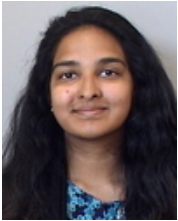Below is a summary of the abstract you submitted. Presenting author(s) is shown in bold.
If any changes need to be made, you can modify the abstract or change the authors.
You can also download a .docx version of this abstract.
If there are any problems, please email Dan at dar78@pitt.edu and he'll take care of them!
This abstract was last modified on May 2, 2019 at 2:20 p.m..

Bacteriophages are undoubtedly great in number; the estimated 1031 members of the phage community are biologically unique yet genomic characteristics among diverse phages may be conserved. In addition to their fascinating diversity and features, their applications in phage therapy make them an important topic of study. Analyzing phages, such as in our research project, allows for a greater understanding of phages as a contribution to the ever-growing knowledge of their impact on our biosphere as well as potential use in phage therapy.
Isolation of novel bacterial hosts from James River rockpools and using those hosts for phage discovery was piloted during Summer 2018. Students in the 2018-19 VCU Phage Lab collected water from rockpools in the James River in order to find phages and bacteria. Bacteria were isolated from the water in the rockpools by streaking a plate, and restreaking until apparent homogeneity of colony appearance. Those novel isolates were then used for phage discovery. Bacteriophages were isolated from river water through enrichment isolation and purified by plaque assays. Multiple rounds of purification were conducted to ensure consistent plaque morphology. A high titer lysate was then collected by flooding a webbed plate with phage buffer and filtering. Phage particles were placed on electron microscopy grids and stained for visualization under a transmission electron microscope. DNA was purified from lysate, and characterized by restriction digest enzymes. Two phages, named Phynn and Kyle lysed our novel bacterial isolate Pantoea sp. A third phage, Beyonphe, lysed a novel bacterial isolate Bacillus cereus.
The genomic DNA of these phages was sequenced. Following sequencing, students collaboratively annotated the genomes. Bioinformatics tools, including DNA Master, HHpred, and Blastp along with reference to Genemark coding predictions were used in order to analyze the genomes. While Pantoea phage Phynn, a myoviridae, had a 173,720 base pair genome with circularly permuted ends, Kyle had a genome length of 73,168 base pairs with 3,603 base pair long terminal repeat. The Bacillus phage Beyonphe had a genome length of 163450 bp and a 2154 bp long terminal repeat. Phynn had 263 open reading frames with two different tRNAs as well as a 44.56% GC content, while Kyle had 109 open reading frames and zero tRNAs. Phynn and Kyle have no significant similarity to each other, and little similarity to other sequenced phages in Genbank. In contrast, Beyonphe had 292 open reading frames and no tRNAs, and significant conservation of genome sequence and proteins to previously sequenced and annotated Bacillus-infecting phages. The relative conservation of Bacillus phage genome sequences and proteins will be contrasted with the novelty of Pantoea phage genome sequences and proteins through analysis using Bioinformatics tools.

